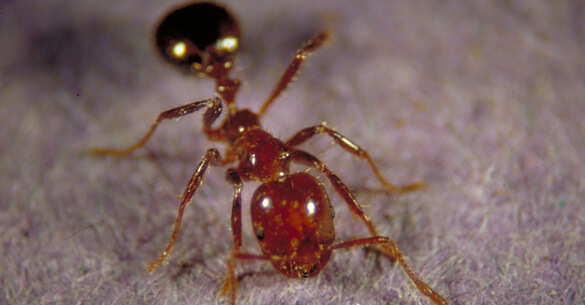
Name
Solenopsis invicta
Appearance
Reddish, about 1.6 to 5 mm. Read more about identification of fire ants.
Behavior, Diet & Habit
Typically nest in the ground. At times, nests may appear as visible mounds of 61 cm in diameter and about 18 cm high. Large colonies can have up to 250,000 workers. Very active and aggressive, they will sting any intruding animal repeatedly.
Fire ants are omnivorous. Known to eat meats, greasy and sweet materials. Fire ants are omnivores, meaning they will feed on animal or vegetable sources of food. The fire ant worker’s diet includes insects, earthworms, ticks, spiders, arthropod eggs, honeydew and other sweets. Plant sources of food include seeds. Young and newborn vertebrate animals eaten by fire ants include birds, rodents and calves. Generally, fire ants readily consume carrion (dead animals) regardless of whether the fire ants themselves caused the animal to die. Fire ant larvae are fed by the worker adults and eat only a liquid diet until their third larval instar is complete. Fourth instar larvae are capable of digesting solid foods.
Reproduction
Total time from egg to adult averages 30 days; workers may live up to 180 days; queens live two to six years.
Red Imported Fire Ant

Fire Ant Nest







